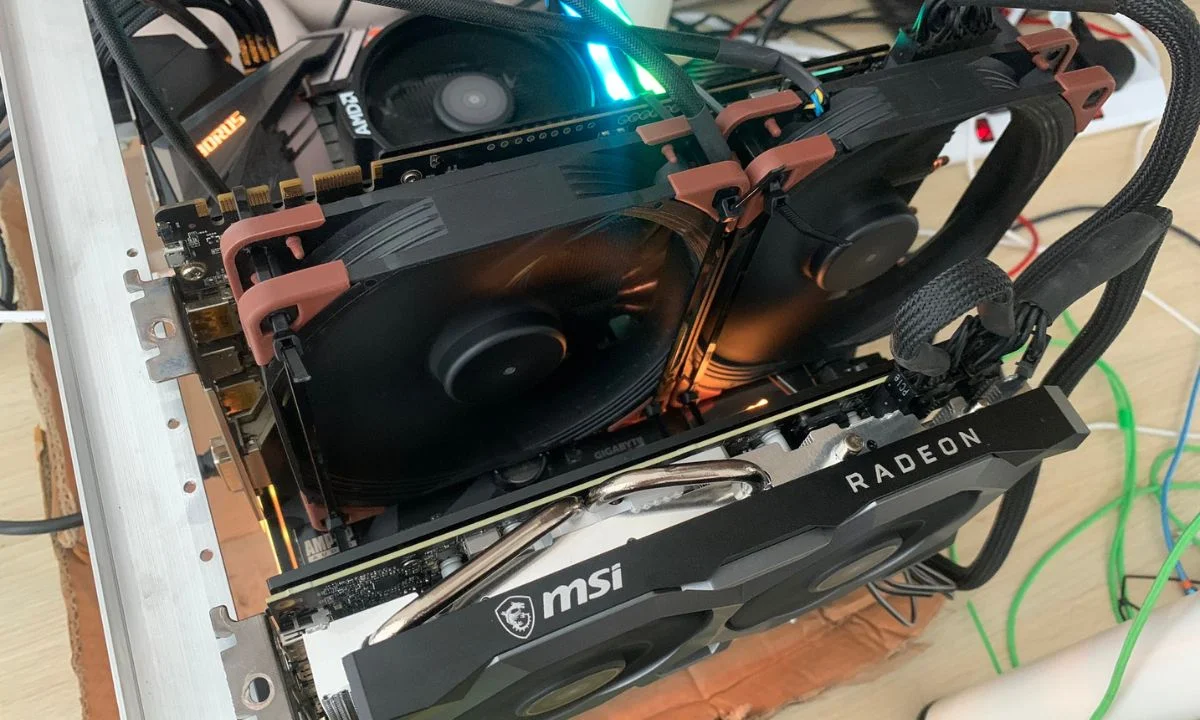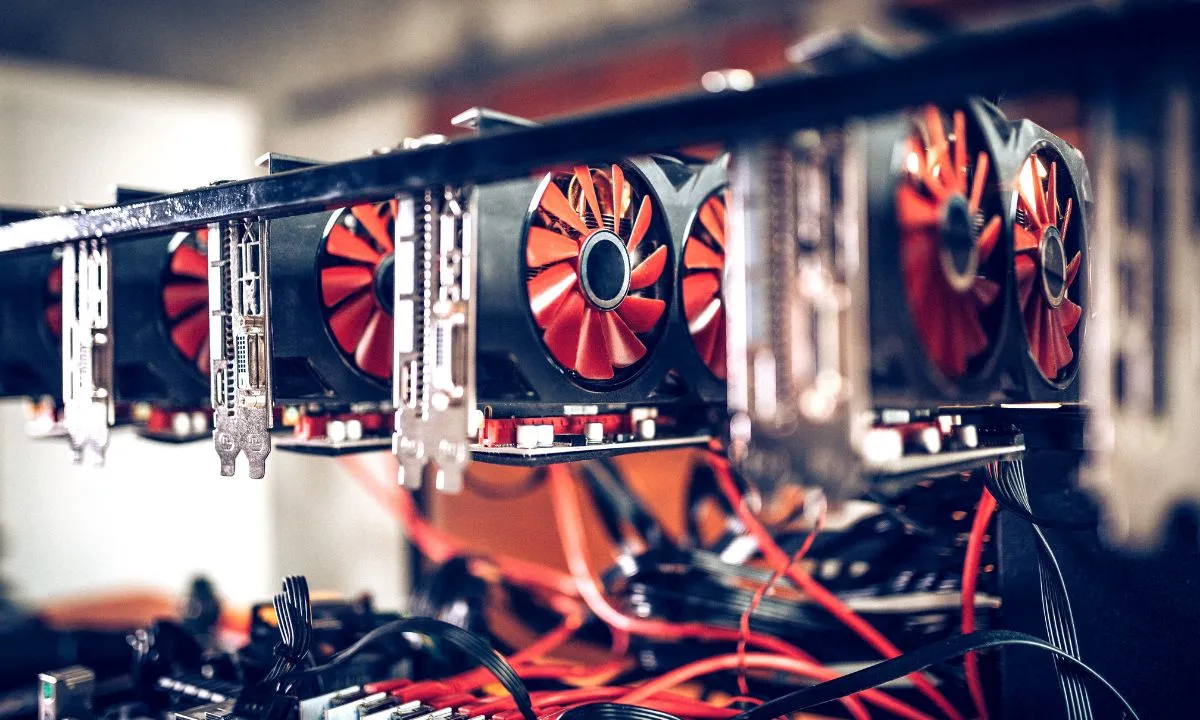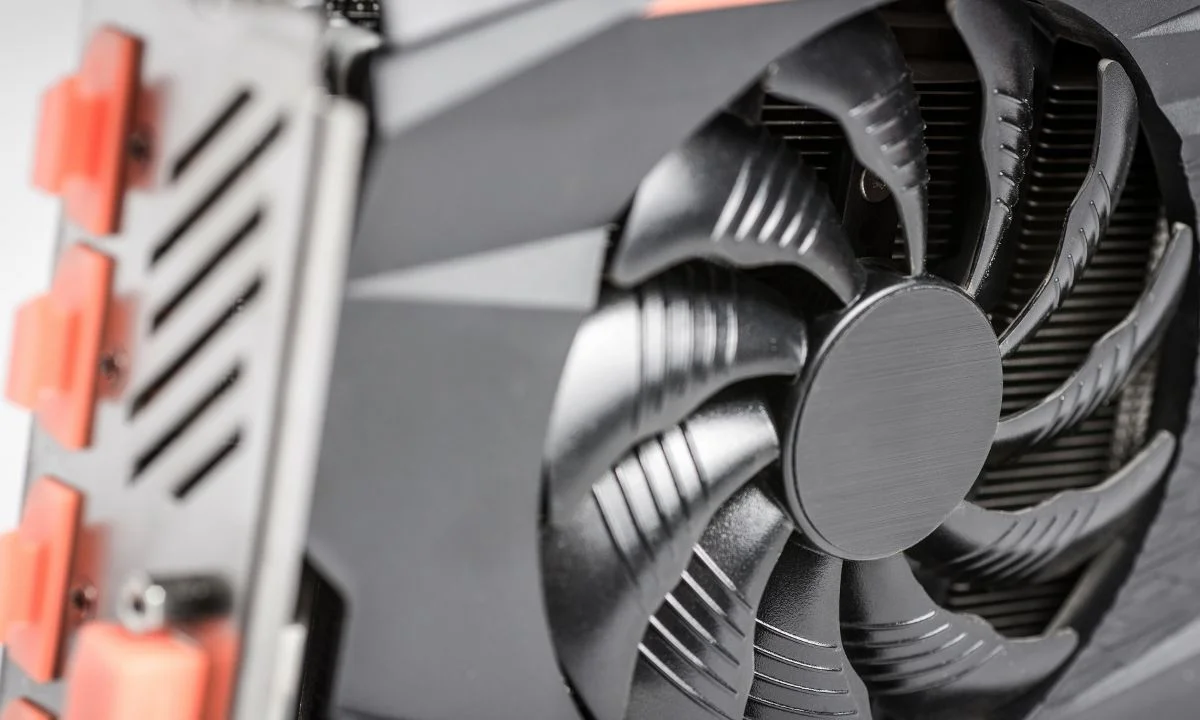Advanced graphics cards push boundaries to deliver cutting-edge gaming visuals. However, their immense processing power generates substantial heat. If a graphics card exceeds its optimal temperature range, it will thermally throttle to protect itself from overheating. This involves slowing down the core clock speeds to lower temperatures, significantly impacting performance.
Left unchecked, thermal throttling can become frequent, interfering with smooth gameplay. Therefore, keeping graphics card temperatures in check is essential. This article will discuss the causes and indicators of thermal throttling.
We’ll examine how different cooling solutions like improved case airflow, cleaning dust deposits, and aftermarket heatsinks can prevent excessive heat buildup. Understanding thermal management techniques enables enthusiasts to get the most out of their GPU hardware without thermal constraints hindering the experience.
What is Graphics Card Thermal Throttling?
Graphics card thermal throttling refers to modern high-power GPUs like the Nvidia RTX 40 series and AMD RX 7000 series automatically reducing clock speeds and performance when core temperatures get too hot. These latest graphics cards from Nvidia and AMD can draw well over 300W under full gaming loads, generating a tremendous amount of heat.
To protect themselves from potential damage, they are designed to thermally throttle once temperatures exceed their maximum operating threshold, typically around 90-95°C. This causes clock speeds to drop on the fly to lower temperatures until throttling is no longer needed for safety.
Causes of GPU Thermal Throttling
The following are the key causes of GPU thermal throttling.
Inadequate case ventilation/airflow restriction
- Dust buildup on fans/heatsinks
- Dense component packaging in SFF PCs
- Inefficient or worn-out cooling solution
- Poor thermal interface material (thermal paste)
- Overclocking without proper cooling upgrades
- Extremely demanding games/benchmarks
- High ambient room temperatures
- Voltage/power increases from overclocking
- Insufficient case fans for cooler exhaust
- Blocked vents and slots restricting air outflow
- Low-end variant with weak cooling
- Factory clock rates pushing limits of cooler
- Bad/uneven application of thermal paste
Thermal throttling occurs when a GPU cannot dissipate heat quickly enough from its core components. One of the primary causes is inadequate cooling capacity within the system. This can be due to insufficient case ventilation and airflow restriction due to poor fan filters/placement.
Dense component packaging in small form factor rigs also contributes. Dust buildup acts as an insulator, hindering heat exchange. Another factor is overclocking, which generates more heat but cooling may not scale accordingly. Heavily taxing games and benchmarks can push even well-cooled systems into throttling.
The thermal interface between the GPU die and heat sink also impacts cooling. Applying thermal paste improperly results in air gaps that impede heat transfer. Excessive workload voltages from overclocking introduce more heat as well. Ambient room temperatures play a role too, as hotter surroundings make cooling a graphics card more difficult.
Signs Your GPU is Thermally Throttling
There are a few tell-tale signs that indicate your graphics card is thermal throttling under load. One of the most obvious is a drop in framerates or stuttering during gaming. This occurs as the GPU is forced to lower its clocks to maintain safe temperatures.
You may also notice performance is inconsistent, with fluctuations between normal and throttled speeds. Graphs of clock speeds over time will show dips correlated with temperature spikes. Monitoring software can confirm the throatline by showing the core clock declining automatically as temperatures approach their limit.
Another sign is higher than expected temperatures in a well-ventilated case. Throttling GPUs may reach 85C or higher where a properly cooled card should stay below 80C typically. Fans may also ramp up noisily to their max speed trying to curb temperature rises. Artifacts or crashes could occur in severe, prolonged throttling cases. Being aware of these signs helps identify cooling issues causing throttling.
Thermal Throttling in Laptop GPUs
Thermal management is an even bigger challenge in thin gaming laptops compared to desktops. Due to tight form factors, components are packed closely together with limited ventilation. Laptop GPUs often sustain heavier throttling due to inadequate cooling solutions. The latest high-powered mobile GPUs from Nvidia and AMD like the RTX 40 series and RX 7000M series push thermal limits further as they consume over 150W.
Major laptop brands try different approaches to cooling. Dell and HP generally utilize dual fan designs with larger vents but thicknesses exceed 1-inch. Asus and MSI focus on thinner 0.8-1-inch bodies but dual fans have smaller blades. Acer and Lenovo balance size with single bigger fans. Cooling performance varies - dual fans maintain the lead but thinner designs throttle more under heavy loads.
Laptop manufacturers are experimenting with advanced thermal engineering. New Dell and HP models implement dual chamber constructions to isolate hot components. Asus equipped ROG Zephyrus models with updated Arc Flow ducts to enhance airflow. MSI implemented triangular heatsinks with delta fans for better pressure on Stealth models. Thermal conductivity can now match high-end desktop AIOs.
Thermal pads or grease is another differentiator. Top-tier laptops from Asus, and MSI often use high-quality pads for improved thermals. Laptops can be further optimized by repasting between the heat spreader and the die. But thicknesses are tight- no room for remount errors. Undervolting is also a useful throttle-reduction tactic exclusive to laptops.
Overall, slim gaming laptops still struggle to balance size, power, and thermals. Reducing throttling demands more radical cooling approaches, but size restrictions continue hampering optimal temperatures. Regular maintenance is also critical for laptops facing tougher vent blockage challenges. Thermal headroom will dictate mobile graphics performance for years to come.
Methods to Prevent Graphics Card Thermal Throttling
Keeping your high-powered graphics card running at its best requires ensuring optimal thermal management to prevent throttling from occurring. The following key points will explore various proactive approaches and solutions you can implement to maximize cooling performance and eliminate throttling issues on both desktop and laptop systems.
Improving Case Airflow and Ventilation
One of the most important factors in maintaining ideal graphics card temperatures is ensuring adequate airflow within the PC case. Poor intake and exhaust can strangle a GPU by not allowing hot air to escape efficiently.
A simple way to boost airflow is adding supplementary case fans, such as installing one or two 120mm models as intake in the front or side panel. Larger fan diameters also help push more air. Front-intake dust filters should be cleaned regularly. Properly routing or sleeving cables can remove obstructions.
Upgrading to an airflow-focused case is also beneficial. Perforated or mesh front panels improve inlet air volume. Supportive fan mounting and vents aid dissipation. Thermals can drop significantly just by optimizing case ventilation through strategic fan placement and component layout. Combined with other cooling enhancements, it offers healthy thermal headroom.
Applying Thermal Paste Effectively
Using high-quality thermal paste between the GPU die and heatsink is crucial. Only a rice-grain amount is needed to form a thin, even layer. Squeezing out too much leads to spillage and air pockets. Apply the paste in the center of the die first before safely mounting the heatsink. This allows the pressure to spread uniformly.
Check for paste squeeze-out around the edges after, then wipe clean. Reapply every 1-2 years as the paste decays over time. Proper application maximizes conductivity for optimal heat transfer away from the hot components.
Upgrading to Aftermarket Air Coolers
When stock coolers can’t prevent throttling, upgrading to liquid cooling offers the most effective solution. Companies like EKWB, Alphacool, and Bitspower design full-cover water blocks that mount directly to the GPU, immersing the critical components in liquid.
This allows heat to dissipate much faster than any air cooler could manage. By incorporating the graphics card into an existing custom water cooling loop alongside the other system components, temperatures can be reduced by 20°C or more compared to air. Liquid cooling unlocks the full potential of high-end GPUs by eliminating all thermal constraints.
Undervolting for Thermal Headroom
Undervolting a graphics card involves lowering its voltage at stock clocks, which can significantly reduce heat output and the potential for throttling. Most modern GPUs operate at excessively high voltages from the factory. By using tools like MSI Afterburner, the voltage can safely be stepped down in small 25-50mV increments until instability occurs during stress testing.
Even slight undervolting of 50-100mV often results in radically lower temperatures under load, sometimes upwards of 10-20°C drop. Lower temps allow automated fan curves to also decrease noise levels.
Stability should always be verified, as too deep an undervolt can cause visual artifacts or system crashes. But most GPUs have substantial voltage headroom. Undervolting is completely safe as it draws less power rather than overclocking. It’s especially useful for thin gaming laptops where heat dissipation is minimal.
Both performance and acoustics improve while also extending component lifespan. Regular repasting and cleaning help sustain the thermal benefits. With minimal effort, undervolting provides a stable and cooler alternative to factory default settings.
Keeping Fans and Vents Clear of Dust
Dust buildup severely hinders airflow and cooling over time. Even a light coating of dust acts as an insulation layer, preventing efficient heat exchange. Fans clogged with dust must work harder to pull air, generating more noise and harming components. Graphics cards require regular dusting, ideally every 2-3 months.
Canned air provides an easy, non-contact cleaning method to clear blades and heatsinks without needing removal. Vent filters should also be vacuumed and cleaned monthly. A dust-free interior ensures optimal thermal performance from fans and heatsinks without restrictions caused by a dirty system.
Adding Supplemental Case Fans
Placing additional case fans is a simple yet effective way to boost airflow for better GPU cooling. Front intake and rear exhaust fans included with cases are often inadequate. Installing one or two high-quality 120mm or 140mm fans as top exhausts removes hot air more efficiently. Extra side panel fans on open-air models push air directly across graphics cards.
Fan controller upgrades allow customizing speeds for various components. Supplemental fans don’t break the budget but can reduce temperatures noticeably. Unrestricted ventilation is critical to prevent thermal throttling, especially in small form-factor builds with restricted airflow.
Conclusion
By implementing various cooling optimizations discussed here, graphics card users can significantly reduce the risk of thermal throttling under load. Proper maintenance like regular dust removal and thermal paste replacement also sustains long-term performance gains. A combination of improved case airflow, supplemental fans, aftermarket coolers, or undervolting can help maximize any GPU’s potential by eliminating thermal constraints.
With some basic proactive steps, both stock and heavily overclocked systems alike can reliably stay within safe temperature limits to deliver stutter-free gaming experiences. Regular monitoring ensures cooling solutions continue working as intended.
Frequently Asked Questions
Q: How can I tell if my GPU is throttling?
Check temperature/usage graphs in monitoring software during gaming. If temps peak near 85°C, performance will fall as the card throttles to reduce heat.
Q: What is the best way to prevent throttling?
Undervolting is considered the best, although a combination of improving case cooling, applying aftermarket coolers or liquid cooling, adding supplemental fans, undervolting, and removing dust offers the most effective solution tailored to your system.
Q: Does thermal throttling reduce FPS?
Yes, thermal throttling directly impacts framerates as the GPU is forced to lower its clocks and power draw to lessen temperature when throttling kicks in. This slows the card’s processing abilities, resulting in noticeable FPS drops in games or other demanding applications running on the overheating graphics card.







